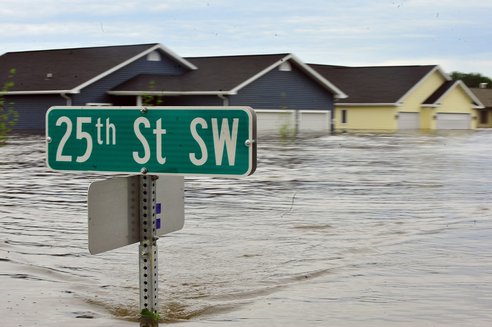A first for "Living Building": Resilient is the new green

In my last column we looked at building codes that are greener than ever.
Now let's see why the definition of green is changing. Fast.

First of all, big storms like Sandy and Katrina have shown us how vulnerable our buildings are. To be sustainable, don't we need homes, workplaces and supermarkets that can take on deeper floods and higher winds that come with climate trends?
In Sandy's wake, Alex Wilson's budding Resilient Design Institute suddenly looked quite prescient at Greenbuild 2012 last month. His idea of "passive survivability" is a truly green idea -- one that even insurance companies should love.
Anyone who couldn't flush their toilets during the recent power outages would be just as motivated.
Buildings that work -- always
To be sustainable, a building should work at all times. Better daylighting strategies mean we can see indoors throughout the day. When it comes to energy supply, renewables might be called sustainables, because any building that can survive off the grid is more useful to society during disasters. (My colleague Chris Nelder covered the topic's energy implications recently.) And a simple hand pump would have been brilliant for our friends with out-of-service water wells.
Resilient buildings are safe haven after big disasters, too, when health issues loom large.
Like Wilson, the new Living Building Challenge has ideas for resiliency also. The latest certified project, the odd-looking "Eco-Sense" home in Victoria, British Columbia, can survive easily off the grid.
Built to be at one with its natural ecosystem, the house has composting toilets, solar water heating, rainwater collection and grey water filtering. It's an energy-producing, mixed-fuel machine for living fed by solar PV, wind turbines, firewood and propane. About 10,000 gallons of water are stored on site. The three-generation family of six eats well, too, with eight of every 10 calories grown right on their property.
Off the cob
The owners Ann and Gord Baird built Eco-Sense to survive. The walls made of cob -- similar to adobe -- are 2 feet thick, super-insulating and unusually resistant to fire and earthquakes. It's the first code-approved structural lightweight insulated cob (SLIC) structure in North America.
Resistance to disasters may not have been top-of-mind for the Bairds. They prefer calling it "a lifestyle and a work ethic." Resilience isn't one of the seven "petals" of the Living Building Challenge. Yet the concept of resiliency seems central to their effort: A durable, self-sufficient homestead that lives off the fat of the land -- and is designed to last 100 years.
This and others like it will last through more 100-year floods, seismic jolts and gale-force winds, too.
The handful of architects now designing and certifying Living Buildings often talk about survivability, resiliency and self-sufficiency. The new green is about protection from the dangers around us -- and ahead of us. The underlying message offers freedom from the blunders of big utilities, government agencies and corporate builders, whose time horizon only extends to their quarterly profit report.
Let's face it: When we build for ourselves, we build for our needs, aspirations and fears. These are powerful motivations -- much more so than restoring natural habitat, I have to say. We want to build sustainable dreams, not fleeting ones.
Green building is changing. And it's getting better for all of us.
This post was originally published on Smartplanet.com